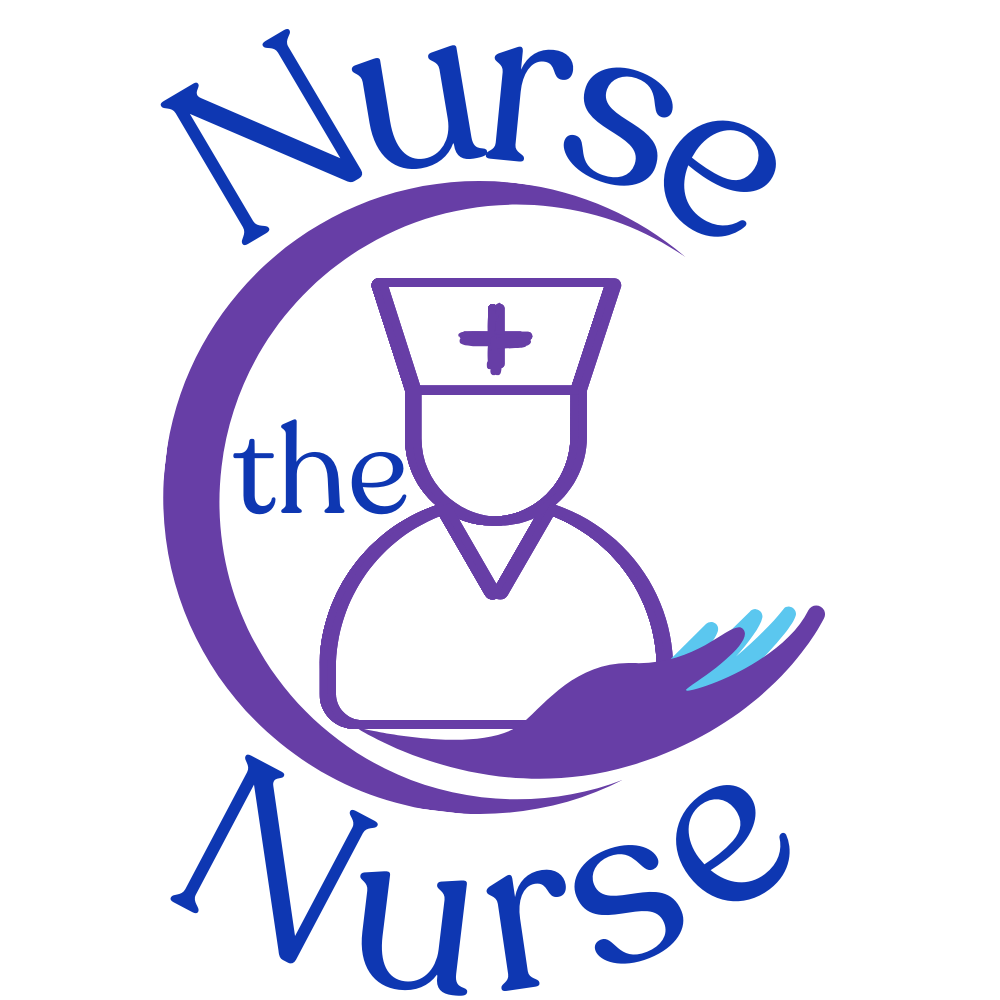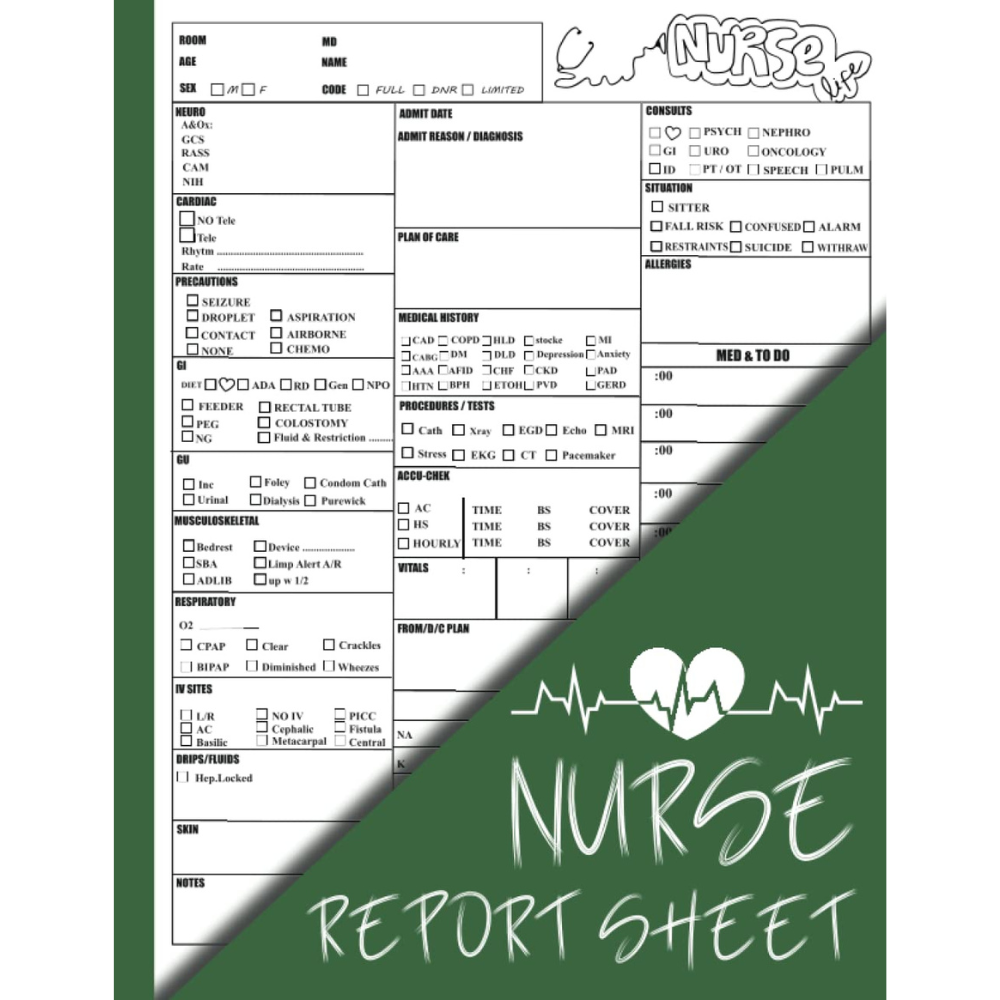Nurse Brain: Creating Your Nursing Report Sheet
Organizing patient information and managing care during a shift can be a challenging task for nurses. Enter the nursing report sheet: an indispensable tool that streamlines patient care and helps nurses stay organized.

Organizing patient information and managing care during a shift can be a challenging task for nurses. Enter the nursing report sheet: an indispensable tool that streamlines patient care and helps nurses stay organized. In this blog post, we’ll uncover the anatomy of a nursing report sheet (sometimes called a "brain sheet" or "nurse brain"), explain how to create and customize your own, and delve into specialized report sheets for various nursing roles. By the end, you’ll have a better understanding of how these simple notes can enhance patient safety and improve overall nursing practice.
Key Takeaways
- Nursing report sheets provide an organized and systematic approach to facilitate patient progress tracking, collaboration between healthcare providers, and enhanced patient safety.
- Customizing a nursing report sheet can help streamline documentation processes, manage time, and improve patient care.
- Adhering to hospital protocols ensures that nursing report sheets are in line with HIPAA and the standards of the healthcare facility for optimal results.
Demystifying the Nursing Report Sheet
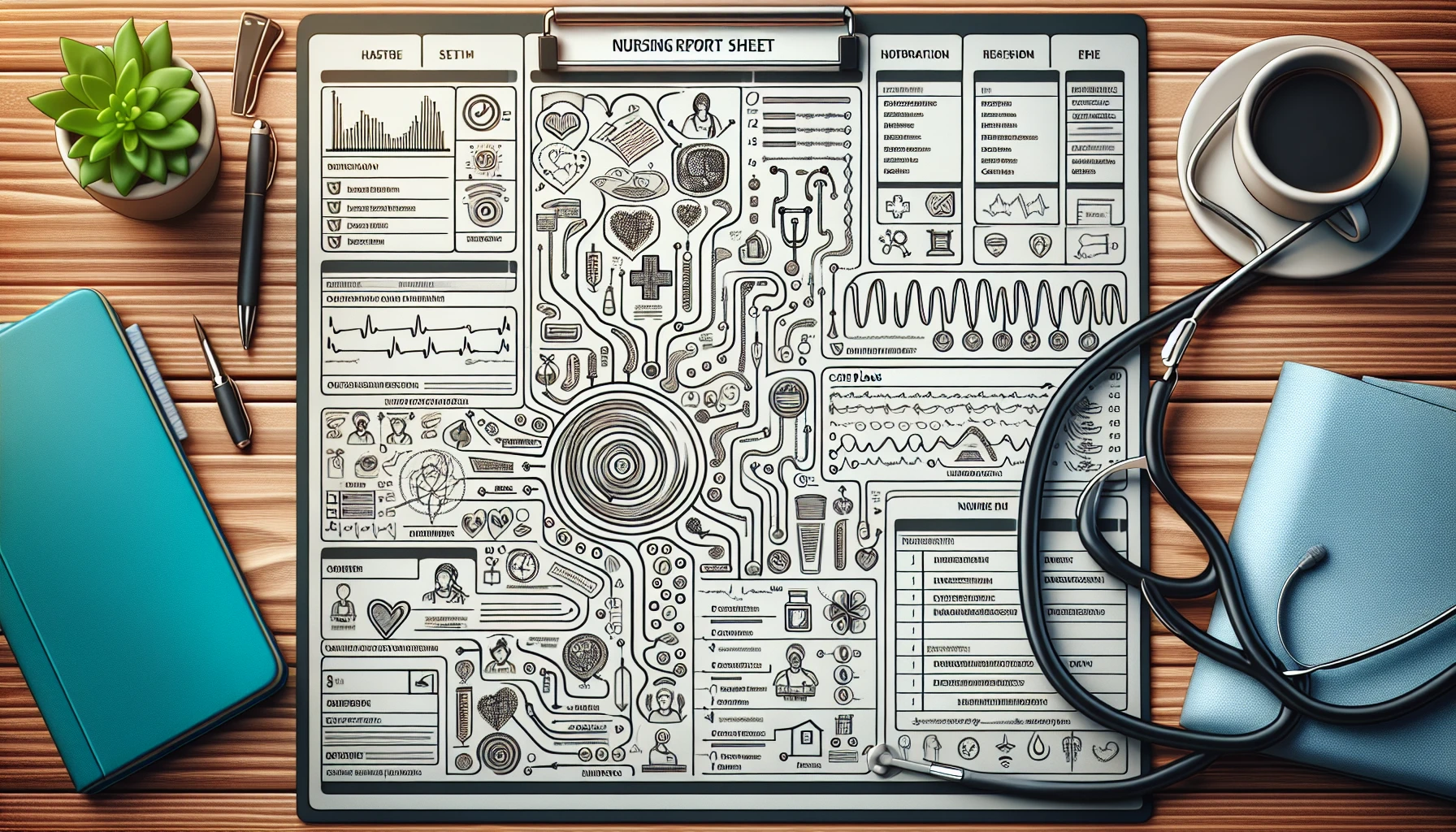
Nursing report sheets serve as vital tools for nurses, aiding in the effective organization and management of patient care. They help nurses stay organized during their shift by providing a structured format to record patient information, medical history, and tasks to be completed during the shift. Many report sheets use the SBAR format to organize information. This also makes it easy to give a concise report at shift change, or when contacting a doctor.
Nursing school students must learn how to craft their report sheet in a way that makes sense for them, while including all the pertinent information needed to effectively and safely complete their patient care tasks.
Employing a nursing report sheet offers benefits such as improved organization and efficiency in monitoring patient care.
Crafting the Ultimate Nurse Brain Sheet
Developing a nurse brain sheet, a resource for capturing and organizing crucial patient data, assists both nursing students and seasoned nurses in maintaining organization and focus on patient care. By developing your own brain sheet, you can ensure that all important information is at your fingertips, making it easier to track patient progress, communicate with other healthcare providers, and prioritize tasks during your shift.
For Student Nurses: Building a Brain Sheet from Scratch
For nursing students, constructing a brain sheet from scratch can be a valuable learning experience, as it helps reinforce patient safety and organization. Begin by keeping it simple and determining the sections you need, such as:
- Patient history
- Medications
- Vital signs
- Body systems status
Customize the layout, include relevant details, and regularly update and refine your brain sheet to suit your individual workflow and preferences. Of course, the best way to develop one is to see what works for other nurses and adapt it to your needs.
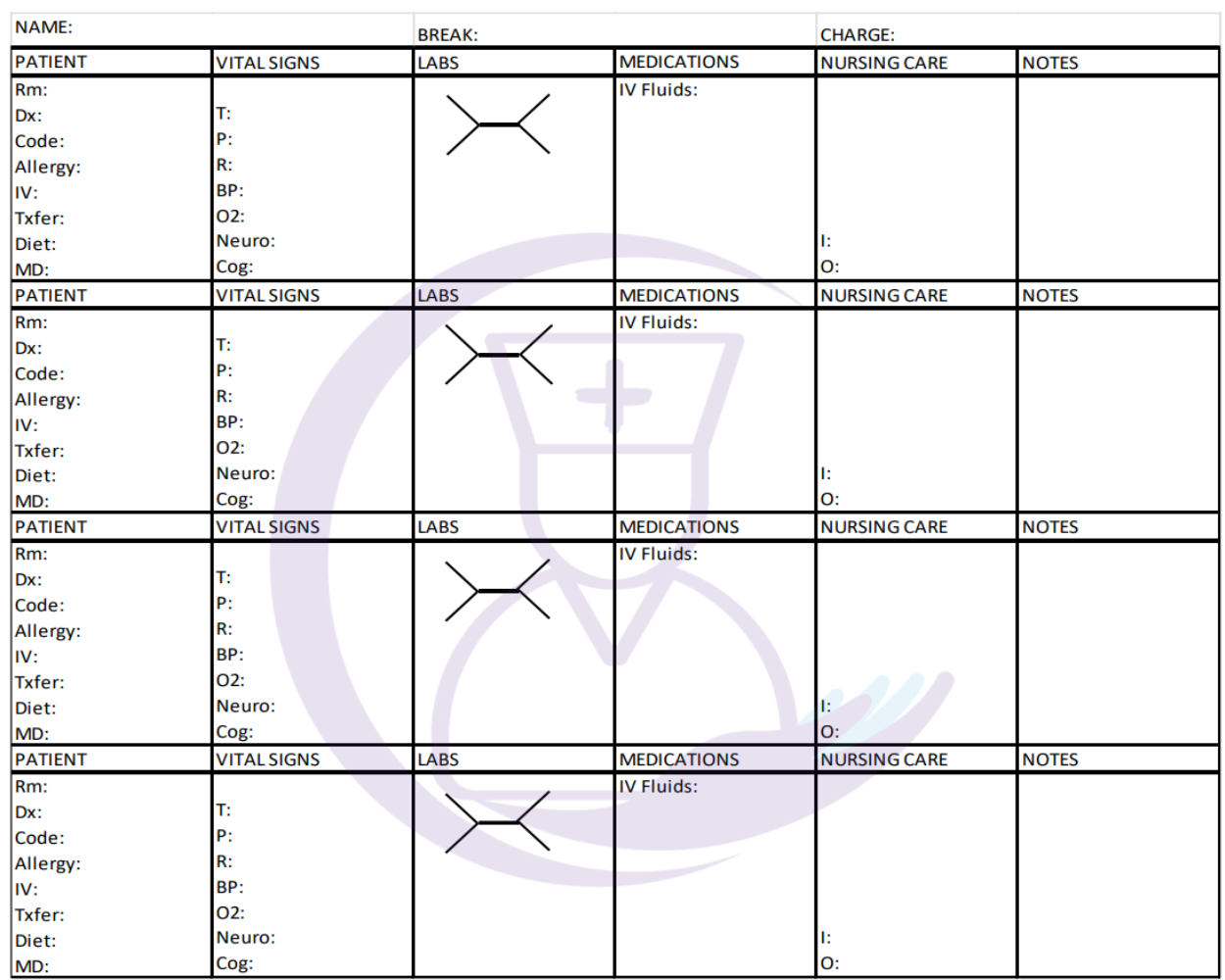
Layout
Some nurses like a horizontal layout, like the one shown here and some like it vertical, like the nursing.com sheet shown below. Some prefer a 4-square design like the title image. The choice depends on personal preference, but also, how the sheet is folded to fit in the nurse's scrub pocket! Some like to fold the sheet so only certain information shows, or so only one patient shows at a time.
Although common practice among nurses and nursing assistants, be careful about keeping it in your pocket. If you happen to be toting a pen, Saline flushes, IV port caps, and your phone, it can be easy to "lose your brain", meaning you not only lose your chart review info, but also your organization for the rest of your shift. Not to mention, it can also pose a risk of HIPAA violation if it should fall into the wrong hands.
Some nurses use a folding clipboard to keep better track of their brain and maintain the privacy of the information.
Time Management
One skill all nurses must learn to master is time management. Utilizing a report sheet can help you plan your shift. Some report sheets have a timeline on them to indicate when specific medications are due, and to plan specific treatments or tasks, such as wound care, catheter changes, bladder scans, or blood draws.
Having a good timeline on your report sheet will prevent you from reaching the end of your shift and suddenly realizing you did not complete a task. If you do, you must either stay late to complete it or pass the task on to the next shift, which should only be done sparingly, out of respect for your fellow nurses.
Tracking Lab Values
Nurses brain sheets use a universal diagram to organize lab values. It is often referred to as a "fishbone". There are a few different fishbone diagrams that include various sets of lab values from a CBC, BMP, ABG, etc. Most nurses will only need one or two of the main diagrams, such as CBC and BMP, but ICU nurses or cardiac nurses might need to use the ABG, Renal, or other diagrams.
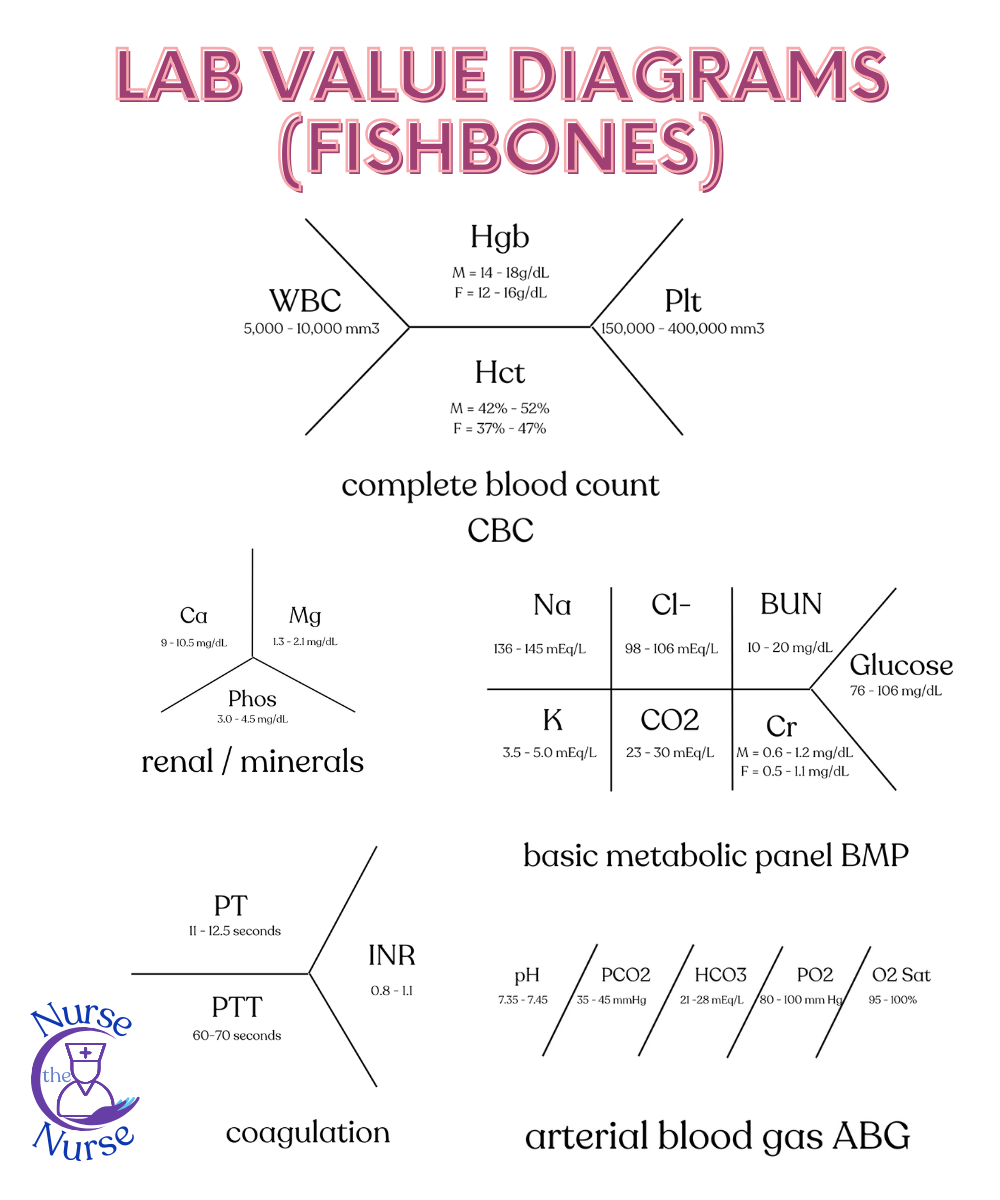
Specialized Report Sheets for Diverse Nursing Roles
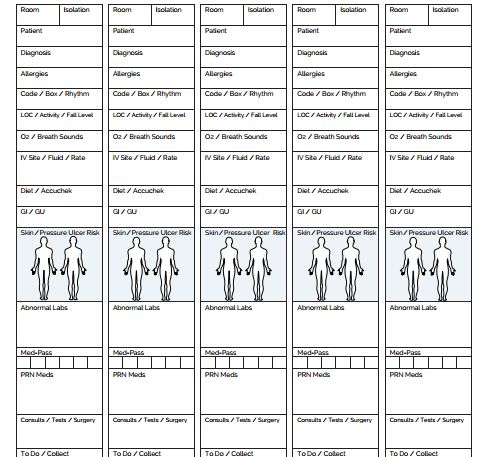
Report sheets designed for specific nursing roles, like cardiac care or ICU nursing, ensure comprehensive capture and effective organization of all pertinent information. These sheets are utilized by nurses to record relevant patient information and ensure continuity of care, making them an essential tool for various nursing specialties.
Cardiac Care Focus: The Heart of the Matter
Cardiac care-focused report sheets can dedicate spaces for cardiac information. This may include EKG readings, medication schedules, and post-procedure care details. By incorporating this vital information, cardiac nurses can provide more precise and comprehensive care to their patients through effective care plans, ensuring that the unique needs of those with heart conditions are addressed effectively.
The Critical Intensity of ICU Nurse Report Sheets
ICU nurse report sheets often contain more detailed information to help manage the critical needs of ICU patients. These report sheets include pertinent patient information such as:
- Demographics
- Medical history
- Current medications
- Vital signs
- IV and titration settings
- Oxygenation status
- Fluid balance
- Laboratory results
- Ventilator settings (if applicable)
- Ongoing treatments or procedures
- Changes in the patient’s condition
- Nursing interventions and assessments
- Any noteworthy notes or concerns.
Free Downloads: A Treasure Trove of Nursing Report Sheet Templates

Numerous nursing report sheet templates are accessible for download from Nursing.com, enabling nurses to identify the ideal fit for their requirements. By exploring different templates and selecting one that best meets your requirements, you can ensure that your report sheet is tailored to your personal preferences and the specific needs of your patients.
There are report sheets available for purchase from Etsy, Amazon, and other sites, for a nominal fee. If you are a little bit computer savvy, and with the help of Canva or another design tool, you should be able to use examples as a guide to customize your own.
Compliance with Hospital Protocols
Some hospitals have their own report sheets you can use during your shift, but if you have your own, you will always have exactly what you need, in the format that works for you. Be sure to follow HIPAA regulations with your brain sheet, keeping it in your possession, and never leaving it laying face-up where visitors or other patients can see. I would suggest trying out these folding clipboards as a way to keep track of your paper and protect sensitive information.
Also, don't take your work home with you! Always shred your brain or otherwise dispose of it per facility protocols at the end of your shift, before you leave.
Ensure that your report sheet complies with hospital protocols to maintain consistency and efficiency. By adhering to established policies and procedures, you can guarantee that your nursing report sheet is in line with the expectations and standards of your healthcare facility, ultimately providing top-quality patient care.
Summary
In conclusion, nursing report sheets are essential tools for organizing patient information and managing care during a shift. By understanding the anatomy of a report sheet, creating and customizing your own, and adapting to hospital policies and technology, you can enhance patient safety, improve communication, and streamline your nursing practice. So, take control of your nursing report sheet game and ensure the best possible care for your patients.
Frequently Asked Questions
What is the purpose of a nursing report sheet?
A nursing report sheet provide nurses with an organized system for tracking and managing patient care, allowing them to stay on top of their shift.
How can I customize my nursing report sheet for maximum efficiency?
Customize your nursing report sheet for maximum efficiency by considering the size, format, and content that best meets your needs and those of your patients.
What is the importance of accurate report sheets for patient safety?
Accurate report sheets are essential for patient safety, as they provide the relevant information required to ensure healthcare providers have the necessary details to deliver proper and safe care.
How often should nursing report sheets be reviewed and updated?
Nursing report sheets should be reviewed and updated regularly to ensure accuracy in patient care.
